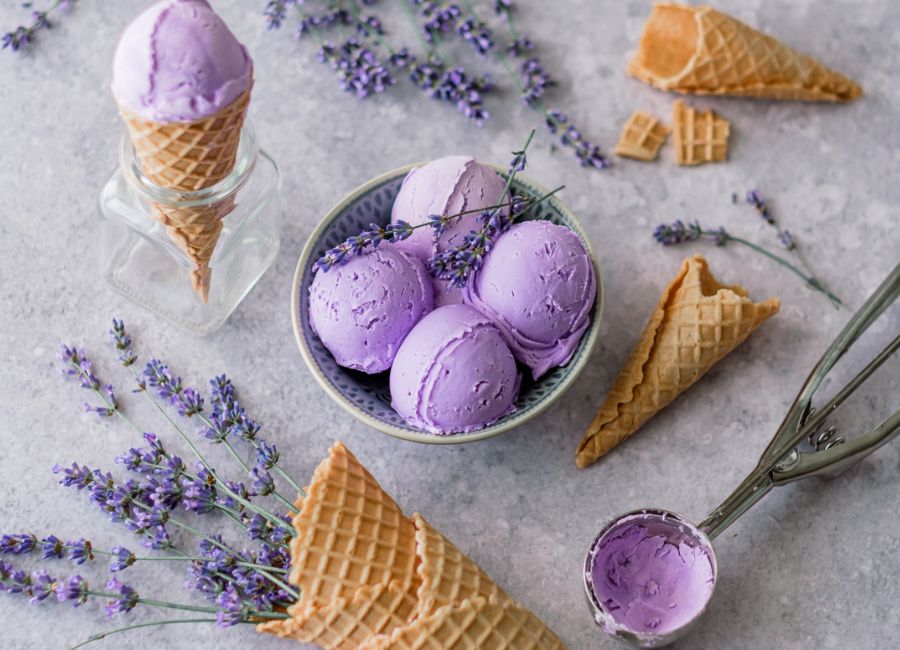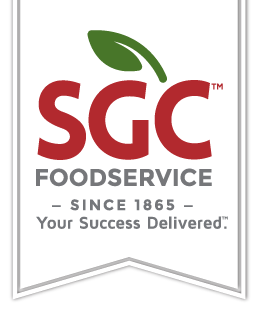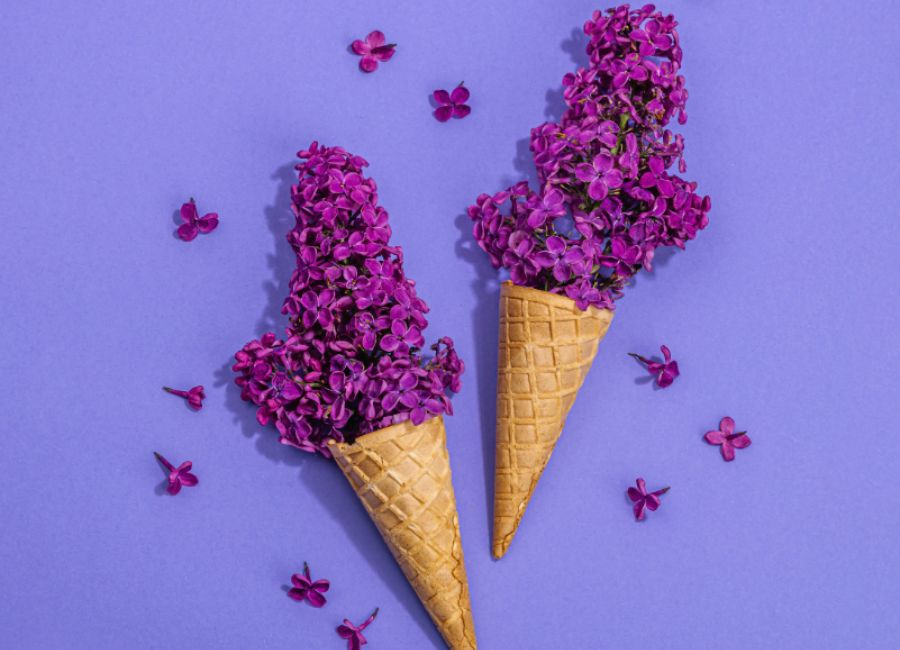Have you noticed that more and more drinks are including a floral/botanical taste? Well, it’s not a coincidence! Consumers are interested in these flavors, and the foodservice industry is listening to those needs. With it being summertime, these florals and botanicals tend to sprout out into more and more menus across restaurants. Florals and botanicals can provide a wide range of benefits to our foods and beverages, so it is no surprise that people are raving about them. Let’s take a closer look at what those benefits are and why it seems that consumers are searching for them in their meals.
Flavor. It is no secret that a reason why something is consumed is due to its taste. This is a major factor for florals and botanicals. They give off a unique and interesting flavor that leaves people wanting more. For example, coffee shops have been using lavender to their advantage, and that has been a huge win for them. Coffee drinkers like the way the lavender sweetens up the drink just enough not to overpower the coffee itself. Adding that floral taste creates a freshness that has not been experienced as much, so it is a unique version to the common coffee. Not only are beverages benefitting, but foods are also with the addition of florals to desserts and main course dishes. The last final touches to meals typically have a garnish of some sort; however, adding a floral creates a pop of color.
Aroma. The way a certain food or drink smells can be a determining factor for some customers. Sensory plays a big part of the dining experience, so the aromas that botanicals and florals give can make an impact in a positive way. With the aroma of a fresh mint, for example, the mint could play a role in providing a refreshing experience for the consumer. When a food or beverage looks and smells yummy, naturally customers are more inclined to try it. Smell and taste go hand in hand, so if the smell is off, there is a chance the taste won’t sit well either and customers may fear the worst.
Health Benefits. A benefit that everyone looks to. Not only do florals and botanicals have benefits that can be viewed as traditional, but they also have health factors that move many to consumption. Some of the key benefits relating to health are anti-inflammatory and antioxidant properties. When something tastes and smells good, but also has added benefits to your health, it's a good day! Use this to your advantage and promote these to your customers, you will most likely see a rise in interest. A major importance in society today is what ingredients are in our foods, so if those healthy ingredients are added to the meals, show them off. Customers knowing that their food and beverages are prepared with safe ingredients will give them peace of mind.
Visual Appeal. Take a chance and add florals and botanicals to your foods and drinks even if you aren’t already. The way that they light up a meal with their pop of color will give the appeal to the meal in a way it didn’t before. When a meal looks good, your customer gets excited and will want to show it off. Providing your customers with a visual interest before they take their first bite will be important and leave an impression on them. I’m sure you’ve heard the term “Phone Eats First”, this will be that exact moment of your customer displaying their meal to their followers and could potentially score you some free advertising. Some restaurants have drinks or foods that are very visually appealing that people will go just to get that item and snag a photo to show it off for themselves. This is a domino effect that every restaurant wants.
Cultural Significance. For centuries now, florals and botanicals have been used in cooking and drink-making in many cultures around the world. Using them can add a sense of tradition and cultural significance to your customer’s food and drink experiences. Your customers want to feel this attachment and many look to see how they can experience these cultural traditions when dining. This has gotten more and more prevalent today as people want to feel connected to other cultures and try these specialties.
Where are botanicals headed? Sources have been saying that the consumer is so interested in these tastes that they want to see them extend beyond other categories like beverages. What does this mean? A category that has seen some buzz for botanicals to land in is condiments. Currently, condiments are known to be that “last moment” of flavor, but now with the help of botanical ingredients, it is taking on a new character as a functional health provider. Botanicals and florals often intersect with condiments and give consumers an opportunity to have functional benefits and create a chance for new tastes. Reports show that of the top 10 fastest growing seasonings within the condiments category, 6 are floral or botanical ingredients. If your restaurant has not focused more on this, now is the time!

Honey Lavender Ice Cream
Ingredients
-1/3 cup honey – SGC# 121908
-1 tablespoon dried lavender flowers – SGC# 193397
-1 quart half and half – SGC# 195820
-1 (14 ounce) can sweetened condensed milk – SGC# 146780
-1 1/2 teaspoons vanilla extract – SGC# 169326
-Optional: violet gel food coloring
Instructions
In a medium sauce pan add the honey, lavender and half and half. Bring to a simmer; take off the heat, cover and set aside for 15 minutes. Pour through a fine sieve and refrigerate until completely cold (8 hours or overnight). In a medium bowl, whisk cold half and half mixture with condensed milk, vanilla and optional gel food coloring. Pour into an ice cream maker and follow manufacturers instructions.

